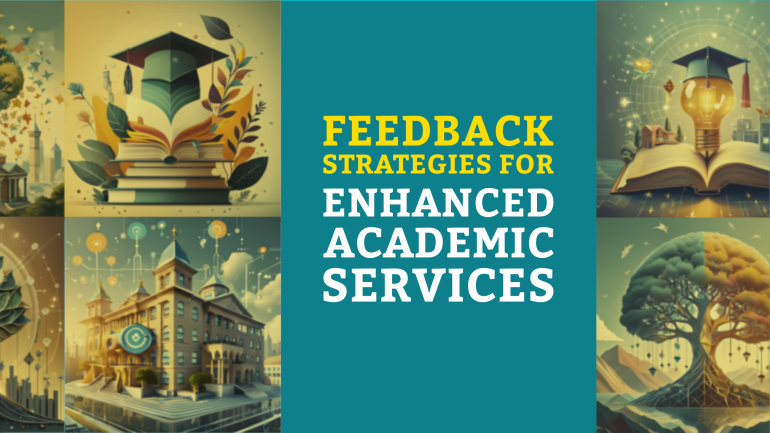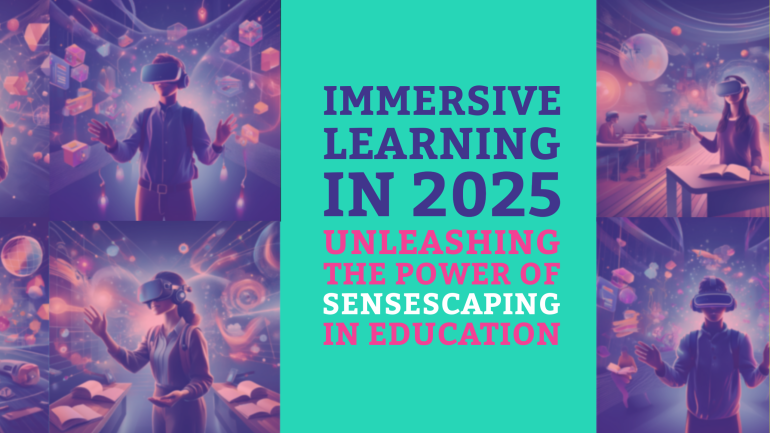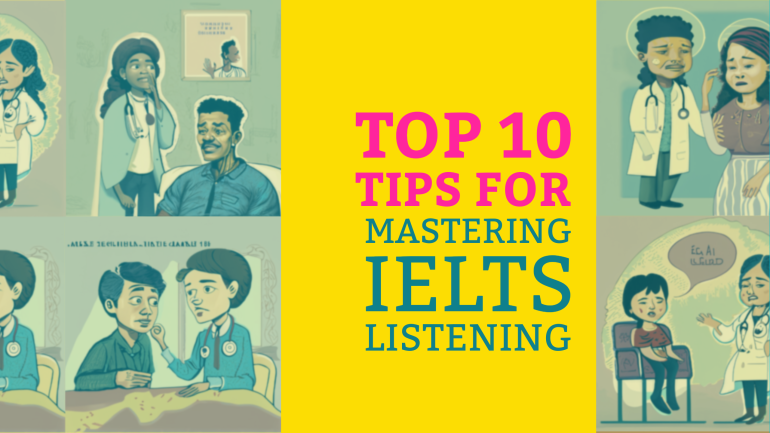Table of Contents
TL;DR: Feedback Strategies for Enhanced Academic Services
- Timely feedback: Providing feedback promptly can enhance student learning and motivation.
- Constructive feedback: Feedback should focus on specific areas of improvement while also acknowledging strengths.
- Use multiple channels: Incorporating various feedback methods such as written, verbal, and peer feedback can cater to diverse student needs.
- Set clear expectations: Clearly communicate criteria and standards for assessment to ensure students understand what is expected of them.
- Encourage self-assessment: Promote student reflection by encouraging them to assess their own work before receiving feedback.
Many educational institutions struggle to provide efficient feedback to students, which can hinder their academic progress. In this blog post, we will explore key feedback strategies that can significantly enhance academic services and student learning outcomes. From timely feedback to personalized comments, we will discuss how these strategies can improve student engagement and achievement. By implementing these effective feedback methods, institutions can foster a collaborative learning environment that supports student success.
Theoretical Frameworks for Feedback
Principles of Constructive Feedback
Some of the key principles of constructive feedback involve being specific, timely, and solution-oriented. Feedback should be focused on the task or behavior, not the person, and should aim to provide actionable steps for improvement. It is imperative to create a safe and supportive environment for receiving feedback, encouraging open communication and a growth mindset.
Models of Feedback in Educational Settings
The implementation of feedback in educational settings can follow various models such as the ‘sandwich’ method, Pendleton’s rules, or the feedback matrix. These models provide structured approaches to delivering feedback effectively, ensuring that it is well-received and leads to meaningful outcomes. The choice of model can depend on the context, the nature of the feedback, and the preferences of the individuals involved.
Plus, selecting the right model can significantly impact the effectiveness of the feedback process, fostering a culture of continuous improvement and enhancing the learning experience for students.
Techniques for Delivering Feedback
Oral vs. Written Feedback
On the spectrum of feedback delivery, oral feedback provides immediacy and allows for a more personal interaction between the instructor and the student. However, it may lack the specificity and detail that written feedback can offer. Written feedback, on the other hand, provides a permanent record for the student to refer back to and can offer more in-depth analysis and suggestions for improvement.
Utilizing Technology for Feedback Delivery
The use of technology in delivering feedback can revolutionize the academic services experience. Feedback can be delivered through various digital platforms, making it easier for both instructors and students to access and track feedback. Additionally, technology can provide opportunities for multimedia feedback, such as audio recordings or video annotations, which can enhance the clarity and effectiveness of the feedback provided.
Feedback delivered through technology also opens avenues for automated feedback systems that can provide immediate responses to students, offering them timely support and guidance. However, it is crucial to ensure that the use of technology does not compromise the quality and depth of the feedback provided, as automated systems may lack the nuance and personalized touch that human feedback can offer.
Feedback to Enhance Teaching Practices
Training Faculty for Better Feedback Provision
Now, teaching practices can be greatly enhanced through proper training and support for faculty in providing impactful feedback. It is necessary that educators are equipped with the necessary skills and resources to give constructive feedback that fosters student growth and learning. Workshops, seminars, and ongoing professional development opportunities can aid faculty in honing their feedback strategies and techniques.
Incorporating Student Feedback into Teaching Development
Now, faculty can enhance their teaching practices by actively incorporating student feedback into their development process. By soliciting feedback from students via surveys, focus groups, or one-on-one meetings, educators can gain valuable insights into what is working well in their teaching approach and areas that may need improvement. This student-centered approach not only improves the overall quality of teaching but also strengthens the student-teacher relationship.
Better yet, faculty members can identify trends and common themes in student feedback to inform their professional growth goals. By pinpointing recurring suggestions or criticisms, educators can tailor their development plans to address specific areas of improvement. This targeted approach can lead to significant enhancements in teaching effectiveness and student engagement.
Feedback for Academic Support Services
Improving Tutoring Services through Feedback
Unlike traditional teaching methods, tutoring services offer personalized academic support tailored to individual needs. To enhance these services further, collecting and acting on student feedback is important. By soliciting feedback from students, tutors can gain valuable insights into their learning experiences, areas for improvement, and overall satisfaction.
Enhancing Library and Research Support through User Feedback
Improving library and research support services through user feedback can significantly impact the academic community. By encouraging students and faculty to provide feedback on the library’s resources, staff expertise, and research assistance, libraries can identify areas of improvement, enhance user experience, and better meet the needs of their patrons.
Library and research support services play a crucial role in supporting students’ academic success. By actively seeking feedback from users on the availability of resources, the helpfulness of staff, and the effectiveness of research assistance, libraries can continuously improve their services to better serve the academic community.
Measuring the Impact of Feedback
Tools for Assessing Feedback Effectiveness
To measure the impact of feedback on academic services, various tools can be utilized. Surveys are commonly used to gather students’ perspectives on the feedback received, allowing for insights into the effectiveness and areas for improvement. Additionally, tracking academic performance metrics before and after feedback implementation can provide quantitative data on the impact of feedback strategies on student outcomes.
Long-term Benefits of Enhanced Feedback Strategies
Implementing enhanced feedback strategies can have significant long-term benefits for academic services. Over time, institutions may observe improvements in student engagement, performance, and retention rates. By consistently providing actionable feedback, educational providers can foster a culture of continuous improvement and empower students to achieve their academic goals.
Impact: Through consistent and effective feedback, educational institutions can enhance student learning experiences and contribute to overall student success. By implementing robust feedback strategies, institutions can create a positive learning environment that supports student development and progression. It is crucial for academic services to prioritize feedback mechanisms to ensure continuous improvement and growth for both students and academic staff.
Challenges and Considerations
Addressing Feedback Resistance
For academic services striving to improve through feedback, resistance from students or staff can be a significant challenge. Resistance may stem from various factors such as fear of criticism, lack of trust in the feedback process, or simply feeling overwhelmed by the feedback received. It is crucial for service providers to address this resistance proactively to ensure that feedback is constructive and leads to actual improvement.
Cultural and Individual Variations in Feedback Reception
One of the key considerations in providing effective feedback in an academic setting is recognizing the cultural and individual variations in how feedback is received. Different cultures may have varying attitudes towards feedback, with some more open to direct criticism while others may find it disrespectful or rude. Likewise, individual preferences and personality traits can greatly influence how feedback is perceived and utilized.
Understanding these cultural and individual variations is crucial for tailoring feedback strategies that are sensitive and effective. Service providers should be mindful of cultural nuances and be prepared to adapt their feedback delivery to accommodate different preferences. By acknowledging and respecting these variations, academic services can ensure that their feedback efforts are truly impactful and well-received.
To wrap up
So, implementing effective feedback strategies is crucial for enhancing academic services and promoting student success. By providing timely, specific, and constructive feedback, educators can support students in their learning journey and help them reach their full potential. Utilizing a variety of feedback methods, such as peer assessment, self-assessment, and digital tools, can cater to diverse learning styles and needs. In the end, a well-structured feedback system not only improves academic performance but also fosters a growth mindset among students, empowering them to take ownership of their learning and strive for continuous improvement.
FAQ
Q: What are feedback strategies for enhanced academic services?
A: Feedback strategies for enhanced academic services are methods used to provide constructive feedback to students, faculty, and staff in educational settings to improve learning outcomes and overall academic performance.
Q: Why are feedback strategies important in academic services?
A: Feedback strategies are imperative in academic services as they help students identify areas for improvement, track their progress, and enhance their understanding of course material. They also provide faculty and staff with valuable insights to make informed decisions and improve teaching practices.
Q: What are some effective feedback strategies for academic services?
A: Effective feedback strategies for academic services include providing specific and actionable feedback, offering timely responses, promoting a growth mindset, fostering a supportive learning environment, and encouraging self-reflection and goal setting.
Q: How can feedback strategies enhance academic services?
A: Feedback strategies can enhance academic services by promoting continuous improvement, increasing student engagement and motivation, building a culture of learning and development, and fostering a collaborative relationship between educators and learners.
Q: How can academic institutions implement feedback strategies for enhanced academic services?
A: Academic institutions can implement feedback strategies by training faculty and staff on effective feedback practices, incorporating feedback mechanisms into curriculum design, utilizing technology for personalized feedback delivery, collecting and analyzing feedback data for insights, and promoting a feedback-oriented culture across the institution.




